With our pixel-possessed diet for digital imaging, we tend to forget about film photography. We think that film is dead and read articles about its death. Do not believe it!
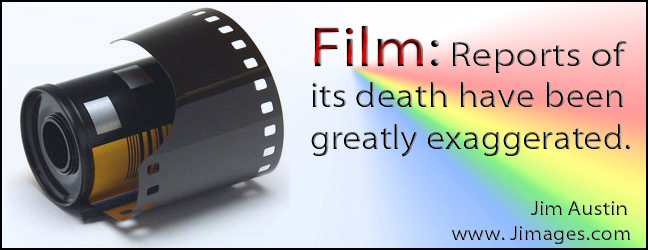
Are you feeling negative about film? If so, let me invite you to change your mind, and offer an easy and fun recipe for getting back into film. Together we’ll see a way we can empower our film photography, explore the joy of the small film camera, and find tips for saving money when processing your film.
We keep hearing that film is dead. Not so. Hollywood still uses film for most movies. There are 90 feet of film needed for every minute of movie. The earth is 24,900 miles in circumference at the equator. Each month, America needs enough film to encircle the world just to meet its demand for movies.
Don’t get me wrong. It is still a digital planet. Digital imaging dominates the market. Including Kodak, there are 270 companies worldwide that sell digital cameras, and only 20 companies that make sensitized film and paper products.
While digital adds speed and flexibility, film is a vital way to experience photography at a slower pace and with a lighter mental load. The beauty of film becomes even clearer when you travel with a small, well-designed machine made for it. Instead of pitting film against digital, consider that film and digital can co-exist.
Film lovers can learn from digital and digital experts can embrace film. My favorite way to combine them is to photograph film and then have the negatives scanned, with no darkroom time and limited Lightroom time.
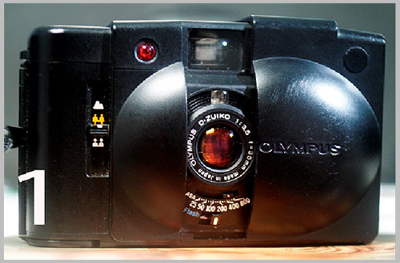 |
Reasons To Explore Film Photography
There are many reasons to carry a small point-and-shoot film camera, even alongside your digital machine. It’s easy to fall in love with film photography when you have a camera you adore. One of the best cameras I bought this year cost me less than 5 dollars and is ideal for street and travel photography. When I was photographing a digital assignment in Florida, I was delighted to find an Olympus point-and-shoot film camera in a dusty box at a local Goodwill store.
This little Olympus offered the promise of shooting some of my time-honored films.
Film is still alive! Here’s a quick look at four KODAK films that are available:
| NAME
Ektar Portra Pro Portra Portra |
ISO SPEED
100 160 400 800 |
FORMATS AVAILABLE
35, 120, 220, 4 x 5, 8 x 10 35, 120, 220, 4 x 5, 8 x 10 35, 120, 220, 4 x 5, 8 x 10 (push process from ISO 25 to ISO 6400) 35, 120 (120 & 220 are medium format: see photo #4) |
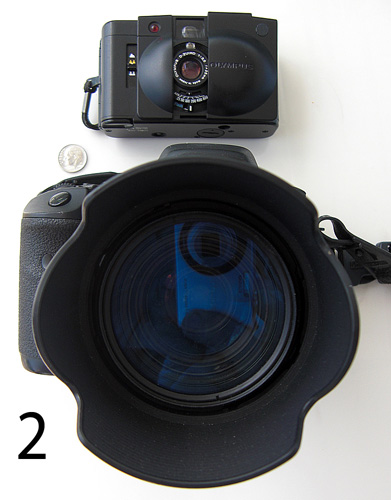
|
Small & Satisfying: The Joy of Mystery
If you have only used a larger camera, photographing with a small film camera also gives you a different tactile experience, in part because of the size difference between the two (photo #2). Grab your camera from purse or pocket, load film, raise the viewfinder to your eye, breathe, gently press the shutter, hear the soft click. Wind. Repeat. Rewind. Drop your roll off at the store.
Now, wait and wonder: did I make a good image? Was it sharp? When the secrets on that roll of film are developed, and you see your successful photos, you’ll want to load more film into the camera.
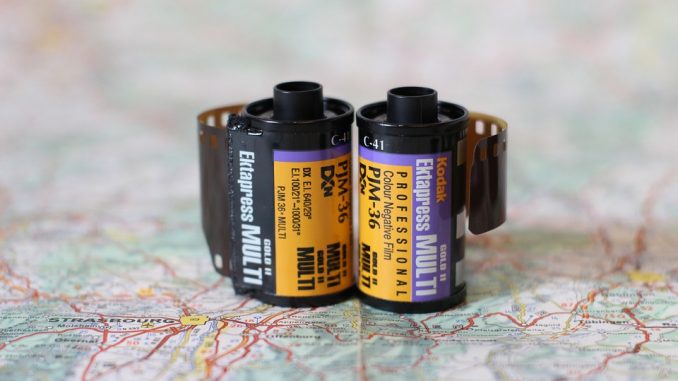
Five Benefits of a Small Film Camera
1. A small, dark-bodied camera lets photographers be unobtrusive. We’ll explore this more below.
2. Even when your subjects are aware of it, a small dull-looking camera takes away a barrier between you and your subject that a large expensive-looking camera can create.
3. The small film camera can make instantaneous, natural-looking images easier to take.
4. Anticipation is a key to creating spontaneous imagery. Because the focus, aperture and shutter are all preset on a small point-and-shoot camera, I find it easier to focus only on the scene. Paying attention to the scene, not the camera, and not the settings on the camera, improves my composition.
5. The small film camera breaks two bad habits. First, photographers can not “spray and pray”, a method sometimes used for nature action imagery with fast auto-advance digital cameras. Second, since there is no LCD screen, there is no time wasted in habitually looking at every shot immediately after capture, or “chimping”.
Surreptitious Shutter on The Sly
Each moment I press the red shutter button on my Olympus to photograph, I’m secretly enthralled. Perhaps it has to do with the sheer physical joy of making pictures with it, or maybe it is the mystery, simplicity or the anonymity it brings to the process. Feather light, its clamshell design captures images more surreptitiously than a digital SLR with noisier shutter volumes. The whisper quiet shutter sound is well below ambient noise levels. This makes the small Olympus ideal for making images on the sly.
But do not take my word for it. Try this recipe yourself to explore the pleasures of working with a small film camera and save some money in the process.
Recipe for Empowering Film Photography
One: Find a Camera
Start a search for a film camera online or in a second hand store. There are lots of inexpensive options (Money Saving Tip: I found the Olympus XA-2 for $4.23 in a Florida Goodwill store).
Two: Tune up the Film Camera
Clean your camera. Change the batteries.
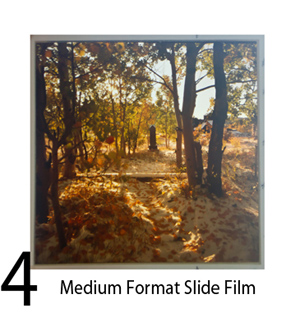 |
Three: Practice
Run a roll of slide film through to check the shutter speeds. Slide film is less forgiving of over and under exposure issues (photo #4). Make sure at some point that sunlight hits all the outside of the camera so you can check the processed film to see if there are any light leaks that will ruin other rolls you shoot. With processed negatives, also look for scratches on the developed film.
Get comfortable with how the camera focuses. Practice so you know the minimum focusing distance. Take high contrast, low contrast and back lit shots to check the lens.
Four: Process your Film at the Store
For processing in the US, Wal-Mart, Walgreens and CVS are all good options. Arguably, the store you go to does not matter, but your relationship with the photo staff and how consistently they monitor and change the chemistry in the processors does matter. The C41 color chemistry process is popular, because it can be used to push-process film, and most labs have it.
Get a CD/DVD when you order prints; jpegs on disk give you a valuable backup for your pictures, and you can print from the disk at any kiosk. Look at the prints and compare the sharpness at the edge to the sharpness in the center of your images.
Target Photo develops 35 mm negatives for only 94 cents when you get next day development. Get the Target Photo CD for $1.99. Skip the Kodak CD because, in my experience, their Easy Share software does not work well. Target’s CD, with low and high resolution scans, has better quality and is less expensive than the Kodak CD.
Five: Share the Joy
I relax when I hand my inexpensive, small camera to children whose language I cannot speak. It’s fun for them if they have never seen a camera and want to try photography for the first time.
Another way to share the joy is with prints. Share your beautiful pictures with your friends and clients by snail mail. Why? Consider that we save printed pictures for years, but often delete emailed images, either by not making time to view them or because we are emptying our email inbox.
Money Saving Tip: Join Costco in the USA. Their photo labs have high quality Fuji Frontier and Noritsu QSS printers. For 13 cents you get a 4 x 6 print, 8 x 10’s are $1.49, 12” x 18” prints at Costco are $2.99 each and 20 x 30 posters are only $9. You can take them your CD with digital files for printing. They also offer custom printer profiles for Mac and Win Photoshop.
You Press the Button: Final Thoughts on film photography
With your film camera, you capture one mysterious moment at a time. When you have a lab process your film, in each soft click of your shutter is an echo of the Kodak ad motto: “You press the button, we do the rest.” This will let you concentrate on just the joy of doing photography. So, find that F5, cradle that K-1000, free that AE-1, grab that G-1, let loose that Leica . . . our nice bright colors and greens of summers on film will be around for a long time to come.
by Jim Austin
All text and photos: © Jim Austin. All rights reserved.

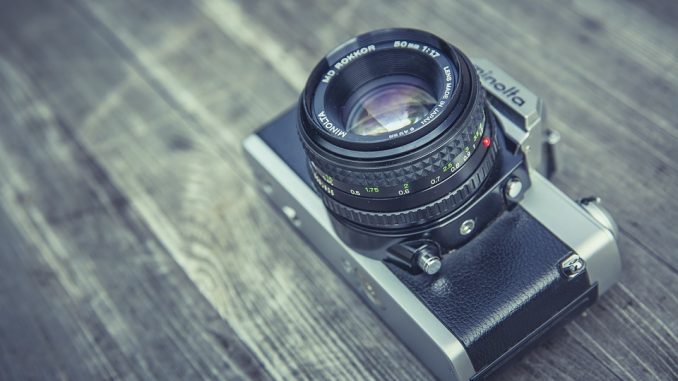
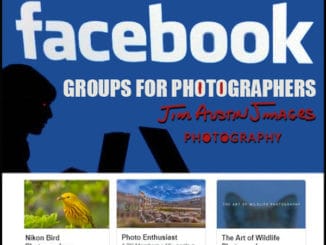
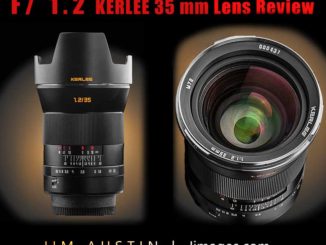
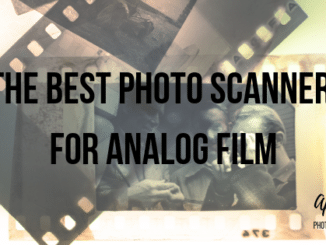
Leave a Reply